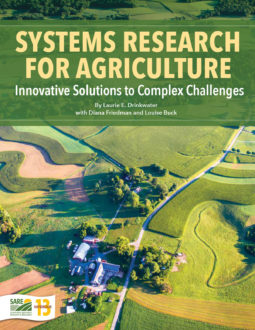Defining the Project Scope
Information Gathering and Literature Review
Identifying the Problem
Establishing Goals and Objectives
Matching Experimental Design to Goals
Situating Experiments: Simulated and Existing Agricultural Systems
Experimental Design Using Simulated Agricultural Systems
Defining the Systems
Design Considerations
Long-Term Experiments
Experimental Design Using Existing Agricultural Systems
Design Considerations
Design Considerations for Statistical Methods
Financial Planning
SARE Case Study: Socioeconomic Analysis of Organic, Grass-Based, and Conventional Dairy Farmers in Wisconsin: Using Quantitative and Qualitative Methods to Study Farmer Decision-Making
References
An approximate answer to the right problem is worth a good deal more than an exact answer to an approximate problem. —John Tukey
A well-constructed research plan always follows four basic steps (Friedland and Folt, 2000):
- Development of one or more hypotheses to address important questions
- Application of the most appropriate methods to test the hypotheses
- Interpretation of results and synthesis of the findings
- Timely dissemination of results.
Agricultural systems research is no different; it proceeds through all of these steps, but the specific nature of this type of research, and the fact that it is often carried out by interdisciplinary groups with expertise in a wide range of disciplines, presents unique challenges. In particular, preliminary steps, such as defining the problem and setting goals, as well as the steps mentioned above—especially developing an appropriate experimental design—are more difficult in interdisciplinary groups where members often lack a shared paradigm or language. Furthermore, scientists and practitioners often have less experience with systems-based studies than with the more common reductionist approaches that require less intensive collaboration.
